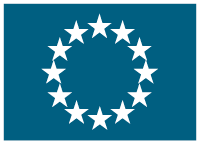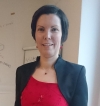Yurtdışında Yaşayan Göçmen Kadınların Maruz Kaldığı Aile İçi Şiddet.
Domestic Violence Suffered by Women Migrants Living Abroad.
Start date: Aug 1, 2013,
Women's rights, an issue that has occupied the agenda of the world for a long time. Nations make necessary arrangements for women to take an active role in society and they pay great attention to legal regulations protecting women. At the beginning of this protective legislation are the protection of women against violence and their rights. However, we as students of the Faculty of Law and the Faculty of Education,use the method of meta-analysis in our research andas a result of our research we observed immigrant women were left alone in the world about combating violence. And we decided to wrote an article about it. Migration to Europe and the problems it brings with it, began to emergeas a result oflabor-based migration, in the years 1970-1980 especially after World War II. And from this date States have begun to make arrangements for immigrants in national and international platform. For this reason, protective regulationsagainstImmigrant women who are exposed to violence within the family or non-family, is a new formationon the agenda of the World. Immigrant women can’t appeal for help as they do not know the language of the country they live, because of the lack of education they don’t reach also competent authority. We as a group of four college students and Venus (Venus represents women today, but in old times the hell) want to raise the awareness of women who deal with violence against the size of the immigrant families and also women who are exposed to violence, about rights and what they can do. The reason we chose the city of Bremen, is the third country in the world, that has the highest immigrant population, according to the list of the United Nations Population Fund. It means that it is 10 million of 191 million migrants. 2.7 million immigrants of Turkish origin living in Germany, the largest immigrant group in terms of numbers are from outside the European Union. Today, 3.1% of the total population living in Germany, which corresponds to the number of 2.7 million Turkish immigrants has more population than the four states of the Federal Republic consisting of 16 states Bremen, Hamburg, Mecklenburg-Vorpommern and Saxony (According to the census in 2009) Organizing in conjunction with panels prepare a brochure that contains the content of legal data. Women who are victims of domestic violence and relatives of women can apply for, also in this regard protection mechanisms could operate institutions and organizations women's shelters in Germany and immigrants are serving in their own language including counseling lines and contact information. By means of these leaflets we will talk about the Session on Combating Domestic Violence Act and the Foreign Nationals, Germany's regulations on the provisions of the German Civil Code and family-related provisions of BGB. In particular, the majority of Turkish immigrants living in Bremen, we are planning to distribute leaflets in places like city centers, shopping malls, metro stations. As the subject of the project; we chose violence against immigrant womenand that their stay silent in the face of violence, helplessness. Because we wanted to take a small but positive step with informing migrant women in Germany,allowing children to grow up free from violence besides conscious moms. And with this project, we will gain experience working with people of different cultures, we believe that we will see the positive impacts of our educational life. As young people we also share a number of social duty loads. Our intention is; teach opportunities and human rights about combat violence to migrant woman. Our goal; bring attention to public and women living abroad when the project is completed; raise awareness; women regain their self-confidence; and to explain that they are not alone. After completing the project is to publish a report on the whole of this process.
Get Access to the 1st Network for European Cooperation
Log In
or
Create an account
to see this content
Coordinator
- http://www.groupvenus.com - Güncelleniyor
- Salacak Mah. Avni Paşa Sk. No:4 D:2 Üsküdar 34668 (Turkey)
Details
- € 7 621,68
-
 Youth\Youth in action (2007-2013)\Youth for Europe\Youth Initiatives
Youth\Youth in action (2007-2013)\Youth for Europe\Youth Initiatives
- Project on ERASMUS Platform
1 Partners Participants
- Borriesstr. 28 28199 (Germany)








